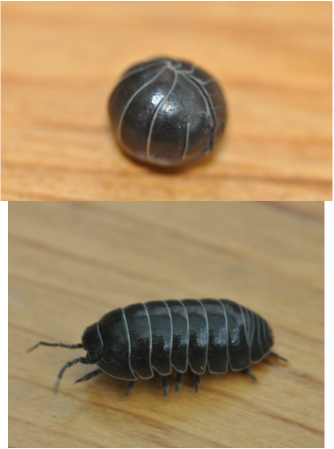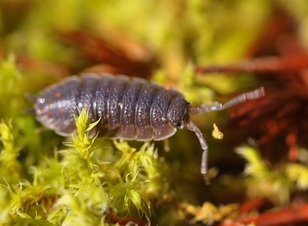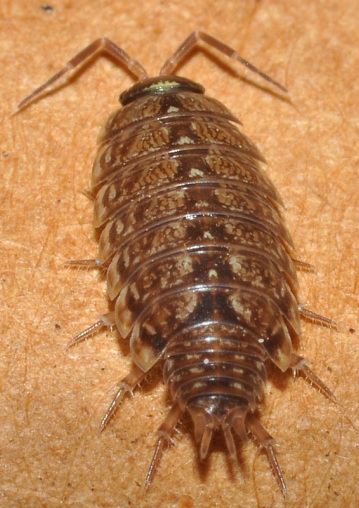|
This is another introduced Woodlouse from Europe, and a handsome one at that. Striped Woodlice (Philoscia muscorum) are named for the dark stripe that runs down the back of the animal. It's other common name the Fast Woodlouse is a reference to its ability to run more quickly than the other common woodlice. Native to Europe, it was been introduced into parts of North America, including Washington State and BC, and New Zealand.
0 Comments
 The many names by which the flat, armoured crustaceans that feed on detritus and live under pots, moist logs and leaf litter go by -and are seemingly interchangeable make me want to swear off English names forever! This is Armadillidium vulgare, and the most descriptive English name is the pillbug (or roley poley!) and you can see that when it goes into defensive mode at the sound of a spider's footsteps, it could be mistaken for a pill. In the dark. After a bender. The woodlouse (#195) can not get into this tight ball (called conglobulation). Conglobulating is not only an excellent defensive mechanism, but also conserves moisture. This is very important when your respiratory organs or pleopods are on your ventral surface. One study (in Smigal and Gibbs 2008) found that pillbugs would spontaneously conglobate at temperatures above 40 deg. C. or when in very dry soil (< 10% moisture). The females carry their eggs in a "marsupium" and even after they hatch, the young are carried until they are able to go into the world on their own. A. vulgare was introduced from Europe to North America. Smigel JT, Gibbs AG. 2008. Conglobation in the pill bug, Armadillidium vulgare, as a water conservation mechanism. 9pp. Journal of Insect Science 8:44, available online: insectscience.org/8.44  This crustacean lives under piece of wood, plant pots, beneath the moss and fallen vegetation. Wood lice (and the pillbugs or roley polies) breath through gills and live in moist areas but not in the water like the rest of their crustacean relatives. The rough texture of the plates seperate this "woodbug" from some of the others found on southern Vancouver Island. Porcellio scaber, like the other members of this group has blue blood as the result of a copper molecule in the oxygen transport molecule instead of a iron molecule like our blood. This is another common species found around houses and gardens that has been introduced from Europe. They feed on dead plant material and are generally not a pest unless they reach huge numbers. The woodlice are not able to roll into as tight a ball (or conglobulate, my new word of the day) as the "pillbugs" do (see #198). |
AuthorsTwo biologists on a beautiful property armed with cameras, smart phones and a marginal knowledge of websites took up the challenge of documenting one species a day on that property. Join along! Posts and photographs by Leah Ramsay and David Fraser (unless otherwise stated); started January 1, 2014. Categories
All
Archives
May 2025
|

 RSS Feed
RSS Feed